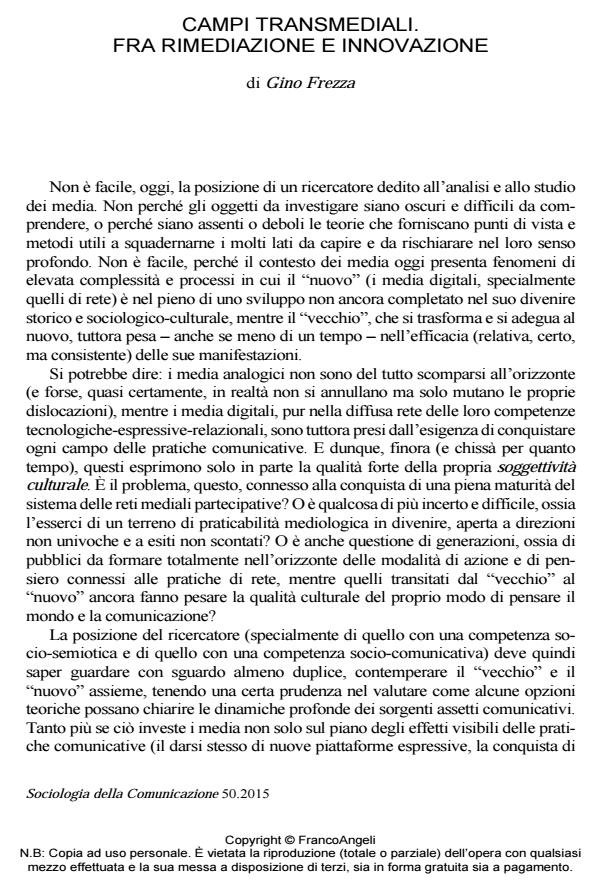Transmedial fields. Between remediation and innovation
Journal title SOCIOLOGIA DELLA COMUNICAZIONE
Author/s Gino Frezza
Publishing Year 2016 Issue 2015/50
Language Italian Pages 10 P. 50-59 File size 219 KB
DOI 10.3280/SC2015-050005
DOI is like a bar code for intellectual property: to have more infomation
click here
Below, you can see the article first page
If you want to buy this article in PDF format, you can do it, following the instructions to buy download credits

FrancoAngeli is member of Publishers International Linking Association, Inc (PILA), a not-for-profit association which run the CrossRef service enabling links to and from online scholarly content.
What are the transmedial fields of communication? The article clarifies some theoretical and historical presuppositions of the today’s concept of transmedial field, with particular reference to the cinema, television and digital media. The essay takes in examination some consequences on the plan of the theoretical and historical search on the media, toward a careful understanding of the knots cultural fabrics between remediation and innovation.
Keywords: Transmedial, intermedial, remediation, cultural innovation
Gino Frezza, Campi transmediali. Fra rimediazione e innovazione in "SOCIOLOGIA DELLA COMUNICAZIONE " 50/2015, pp 50-59, DOI: 10.3280/SC2015-050005